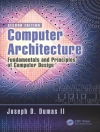Visualinformationsystemsareinformationsystemsforvisualcomputing.Visual computing is computing on visual objects. Some visual objects such as images are inherently visual in the sense that their primary representation is the visual representation.Somevisualobjectssuchasdatastructuresarederivativelyvisual in the sense that their primary representation is not the visual representation, but can be transformed into a visual representation. Images and data structures are the two extremes. Other visual objects such as maps may fall somewhere in between the two. Visual computing often involves the transformation from one type of visual objects into another type of visual objects, or into the same type of visual objects, to accomplish certain objectives such as information reduction, object recognition, and so on. In visual information systems design it is also important to ask the foll- ing question: who performs the visual computing? The answer to this question determines the approach to visual computing. For instance it is possible that primarily the computer performs the visual computing and the human merely observes the results. It is also possible that primarily the human performs the visual computing and the computer plays a supporting role. Often the human and the computer are both involved as equal partners in visual computing and there are visual interactions. Formal or informal visual languages are usually needed to facilitate such visual interactions.
Shi-Kuo Chang & Zen Chen
Recent Advances in Visual Information Systems [PDF ebook]
5th International Conference, VISUAL 2002 Hsin Chu, Taiwan, March 11-13, 2002. Proceedings
Recent Advances in Visual Information Systems [PDF ebook]
5th International Conference, VISUAL 2002 Hsin Chu, Taiwan, March 11-13, 2002. Proceedings
购买此电子书可免费获赠一本!
语言 英语 ● 格式 PDF ● ISBN 9783540459255 ● 编辑 Shi-Kuo Chang & Zen Chen ● 出版者 Springer Berlin Heidelberg ● 发布时间 2003 ● 下载 3 时 ● 货币 EUR ● ID 6318869 ● 复制保护 Adobe DRM
需要具备DRM功能的电子书阅读器












